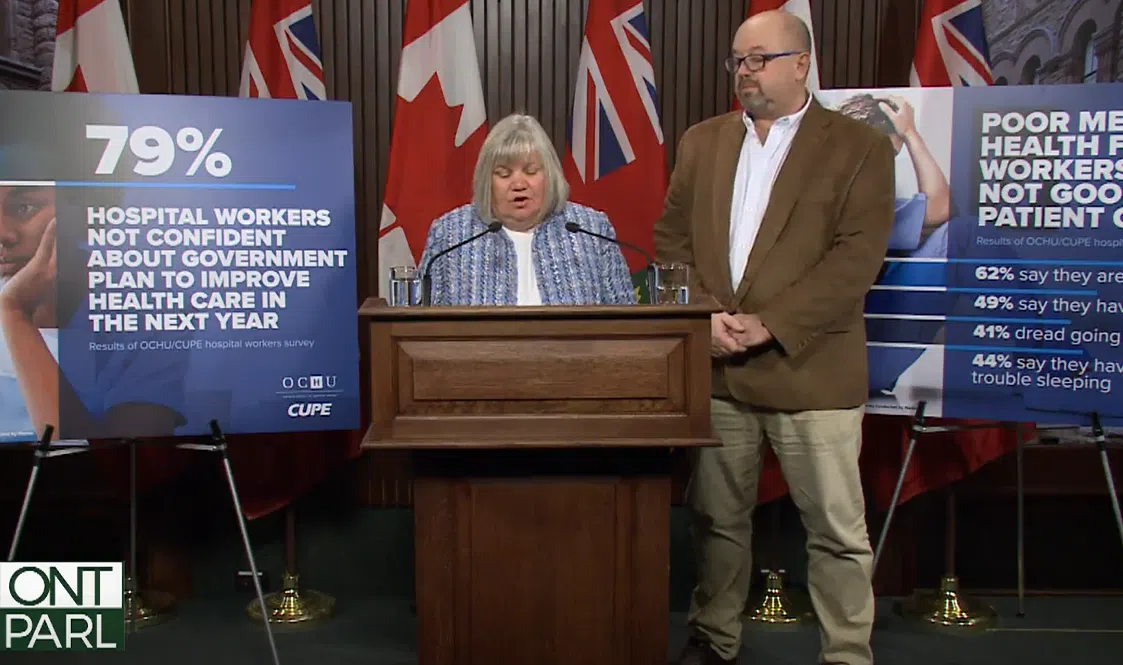
Sharon Richer (l), Secretary-Treasurer with CUPE/OHCU and David Verch, first vice-president, discuss findings of a report on healthcare workers in Ontario, January 3, 2024.
CUPE’s Ontario Council of Hospital Unions is painting a dismal picture of how healthcare workers feel.
A report released says 41 per cent dread going to work while 43 per cent are ready to leave within five years.
Secretary-Treasurer Sharon Richer says the increased workload caused by staffing shortages is the main reason.
“It is a lot about the workload. These people are trained and trained to give good patient care. When they’re not able to do that, it is very upsetting to them. They go to school, and they learn how to provide good patient care. When they’re not able to do it, they’re very upset,” says Richer.
Richer adds it is also having a negative effect on workers’ mental health.
The study found that 62 per cent of healthcare workers say they are exhausted after a shift, and 49 per cent report having anxiety.
Richer says a large majority of workers is also giving up on the government taking action to reverse the trend.
“Based on the current trajectory, the future is bleak. Hospital workers are losing hope. Seventy-nine per cent of OCHU members say they have no confidence, or somewhat no confidence, about the government improving the healthcare system in the next year. This sense of hopelessness and despair is driving workers away,” adds Richer.
The union believes an additional $1.25 billion is needed to improve staffing.
Vice-president Dave Verch says the modest 0.5 per cent increase hospitals are getting this year is extremely insufficient.
“We estimate that Ontario would need 60,000 more staff over the next four years to keep up with population growth and aging. This requires a human health resources strategy which must include the promise of manageable workloads, and that can be achieved through staff-to-patient ratios,” says Verch.
Verch says the union is proposing staff-to-patient ratios in all hospital departments as part of current bargaining with the Ontario Hospital Association.
The union identifies around 19,000 vacancies across the province.




